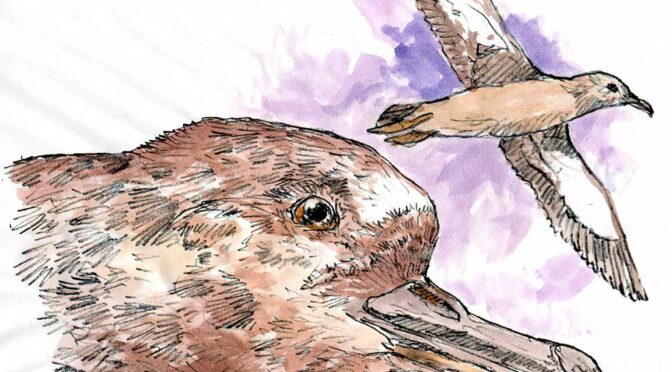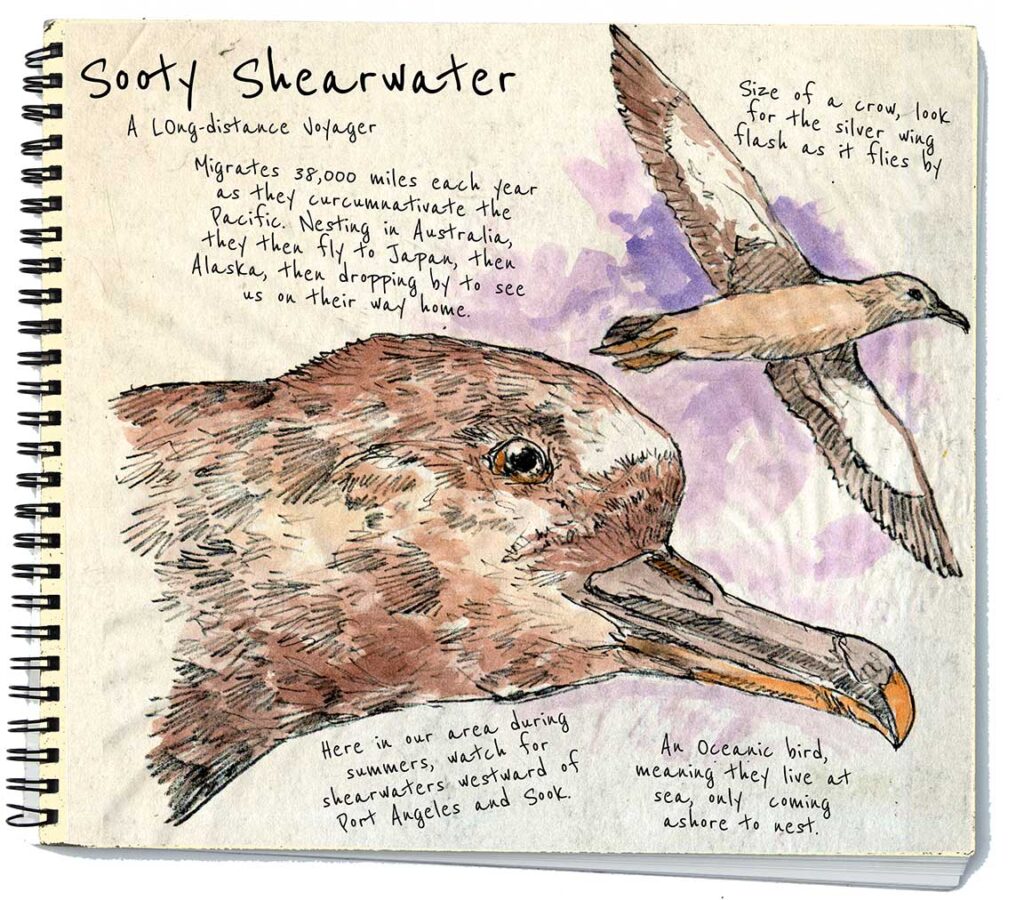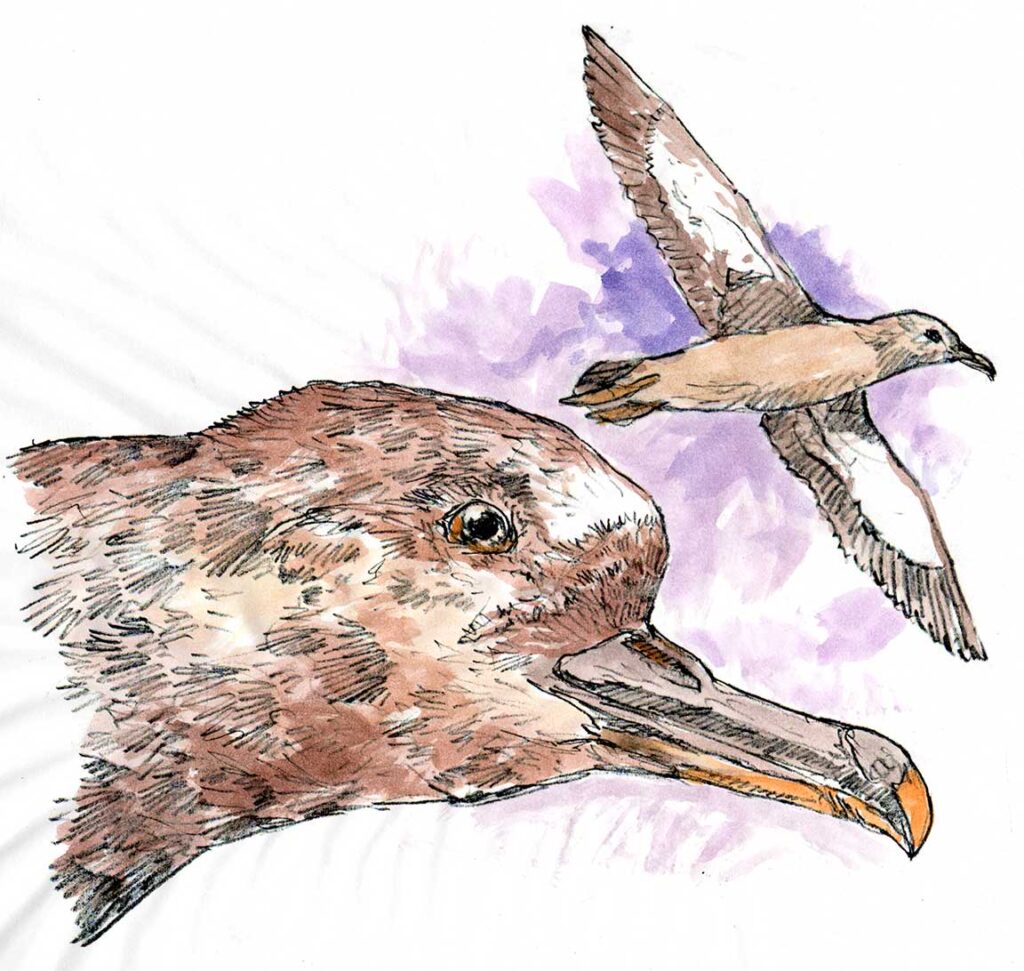I hear you’re voyaging to Barkley Sound or Down-the-Outside this summer! When you’re out there, keep a sharp watch for this little crow-sized bird soaring past, sailing along like a miniature albatross. If you see one, you’ll getting to know a REAL voyager. These small birds fly with quick stiff wingbeats and soar low over waves, using the uplifting power of air coming off the swells to expend little energy to keep aloft. They need that, because these oceanic aviators go astounding distances. Each year, they fly from nesting burrows or rock crevices on islands around New Zealand, Australia and South America, and head north following a figure-8 pattern. Passing Japan in April, they head north to the arctic and then pass us on their way back home.
In all, that’s 38,000 miles, or 1.5 times the distance around the Earth. (Only arctic terns make a longer flight each year.) While doing this, they only rarely meet other shearwaters, and yet there are 20 -30 million of them doing this – and there’s a second race in the Atlantic flying a similar route. Imagine! When they all get back home for nesting season in the Southern Hemisphere, they get together, sometimes in massive flocks (probably to catch up on things). Watch for the silver wing flashes and a dull brown coloration – stiff wings and a plump body. Shearwaters are proof to me that, while we’re generally busy goofing things up, there are creatures out there that are pretty much oblivious to our presence.
Larry Eifert paints and sails the Pacific Northwest from Port Townsend. His large-scale murals can be seen in many national parks across America, and at larryeifert.com.


